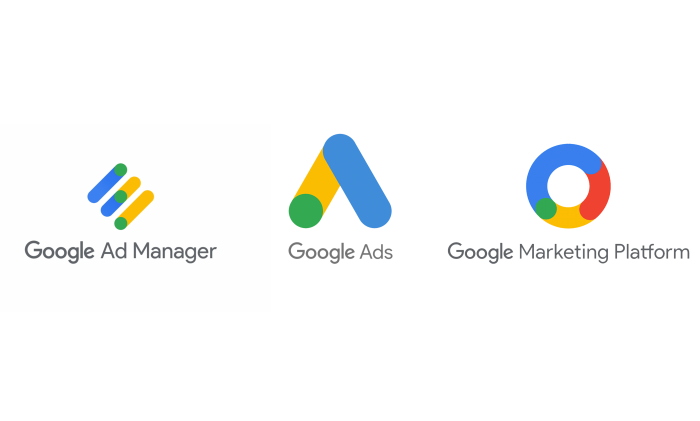Understanding Google Ads A Comprehensive Guide – If you’re looking to drive more traffic to your website or boost your online sales, Google Ads is an effective tool to achieve your marketing goals. In this comprehensive guide, we will discuss everything you need to know about Google Ads, from creating campaigns to optimizing your ads for better performance.
Understanding Google Ads A Comprehensive Guide
Introduction to Google Ads
Google Ads is an online advertising platform that allows businesses to create and run ads on Google’s search engine and other websites that are part of the Google Display Network. Google Ads works on a pay-per-click (PPC) model, which means that advertisers only pay when a user clicks on their ad.
Google Ads allows advertisers to target specific keywords, demographics, locations, and devices. Advertisers can also choose from a variety of ad formats, including text, display, video, and shopping ads.
Creating a Google Ads Account
To create a Google Ads account, you’ll need to sign up at ads.google.com. Once you’ve signed up, you’ll be prompted to create your first campaign.
Before creating your campaign, you’ll need to set up your billing information. You can choose to pay with a credit card, debit card, or bank account. You’ll also need to set your daily budget, which is the maximum amount you’re willing to spend on your campaign per day.
Understanding the Google Ads Interface
The Google Ads interface can be overwhelming for first-time users, but it’s important to understand the different components of the platform. The main sections of the interface include:
- Campaigns: where you create and manage your campaigns
- Ad groups: where you organize your ads by theme or topic
- Ads: where you create and manage your ad creatives
- Keywords: where you add and manage the keywords you’re targeting
- Audiences: where you target specific demographics or interests
- Settings: where you set your campaign settings, such as location and device targeting
Keyword Research for Google Ads
Keyword research is the process of identifying the keywords and phrases that people are using to search for products or services like yours. Keyword research is crucial for creating effective Google Ads campaigns because it helps you understand what your target audience is searching for.
To conduct keyword research, you can use tools like Google Keyword Planner or Ahrefs Keyword Explorer. These tools will help you identify high-volume keywords and estimate their cost per click (CPC).
Creating a Campaign
To create a campaign, you’ll need to choose a campaign type, such as Search, Display, or Shopping. You’ll also need to set your campaign settings, such as your daily budget, bidding strategy, and targeting options.
Once you’ve created your campaign, you’ll need to create ad groups. Ad groups allow you to organize your ads by theme or topic. For example, if you’re a pet store, you might create ad groups for “dog food,” “cat food,” and “pet toys.”
Ad Groups and Ad Formats
Ad groups contain your ad creatives and the keywords you’re targeting. It’s important to create ad groups that are tightly themed and contain relevant keywords.
Google Ads offers a variety of ad formats, including text, display, video, and shopping ads. Text ads are the most common type of ad format and appear on Google’s search engine results pages. Display ads, on the other hand, appear on websites that are part of the Google Display Network.
Video ads are a great way to engage users on YouTube and other video-sharing websites, while shopping ads allow e-commerce businesses to showcase their products directly in search results.
Writing Compelling Ad Copy
To create effective ad copy, you’ll need to understand your target audience and what they’re searching for. Your ad copy should be concise and compelling, with a clear call-to-action (CTA) that encourages users to click on your ad.
It’s also important to include your target keywords in your ad copy to improve relevance and quality score. Quality score is a metric used by Google Ads to evaluate the relevance of your ads and determine your ad rank.
Setting Bids and Budgets
Setting bids and budgets is a critical component of Google Ads campaign management. Your bids determine how much you’re willing to pay for each click on your ad, while your budget determines how much you’re willing to spend per day or per campaign.
It’s important to set your bids and budgets strategically to maximize your return on investment (ROI). You can use bidding strategies like manual bidding or automated bidding to optimize your bids for different goals, such as maximizing clicks or conversions.
Monitoring and Optimizing Campaign Performance
To ensure that your Google Ads campaigns are performing at their best, it’s important to monitor and optimize your campaigns regularly. You can use the Google Ads dashboard to track metrics like clicks, impressions, and conversion rates.
It’s important to analyze your campaign performance data and make adjustments to your campaign settings, ad creatives, and landing pages as needed. Regular optimization can help you improve your ROI and achieve your marketing goals.
Google Ads Metrics to Track
Some of the key metrics to track in your Google Ads campaigns include:
- Clicks: the number of times users clicked on your ad
- Impressions: the number of times your ad was displayed
- Click-through rate (CTR): the percentage of users who clicked on your ad out of the total number of impressions
- Cost per click (CPC): the average amount you paid for each click on your ad
- Conversion rate: the percentage of users who completed a desired action, such as filling out a form or making a purchase
- Cost per conversion (CPA): the average cost of acquiring a conversion
Display Advertising with Google Ads
In addition to search advertising, Google Ads also allows you to run display advertising campaigns. Display ads appear on websites that are part of the Google Display Network, which includes millions of websites and apps.
To create effective display ads, it’s important to choose the right ad format and targeting options. You can target users based on demographics, interests, or website placements.
Retargeting with Google Ads
Retargeting is a powerful advertising strategy that allows you to target users who have previously interacted with your website or ads. Retargeting ads can help you stay top-of-mind with potential customers and drive more conversions.
To set up retargeting campaigns in Google Ads, you’ll need to install a retargeting pixel on your website and create remarketing lists based on user behavior.
Google Ads Best Practices
To maximize the effectiveness of your Google Ads campaigns, consider these best practices:
- Conduct thorough keyword research to identify high-value keywords
- Create tightly-themed ad groups with relevant keywords and ad creatives
- Write compelling ad copy with clear CTAs
- Set your bids and budgets strategically to maximize ROI
- Monitor and optimize your campaigns regularly
- Use targeting options like demographics and interests to reach your target audience
- Use A/B testing to test different ad creatives and landing pages
- Implement conversion tracking to measure the success of your campaigns
- Utilize negative keywords to exclude irrelevant searches and improve ad targeting
- Take advantage of Google’s automated bidding and optimization tools for increased efficiency
- Stay up-to-date with Google Ads best practices and algorithm updates.
Common Google Ads Mistakes to Avoid
As a language model, I can provide some common Google Ads mistakes that businesses should avoid when creating and managing their ad campaigns:
- Poor Keyword Research: Not conducting thorough keyword research to identify the best and most relevant keywords for your business can lead to low-quality traffic, wasted ad spend, and poor campaign performance.
- Not Setting a Budget: Failing to set a budget for your campaign can lead to overspending and poor ROI. Always set a clear budget and monitor spending to ensure that your campaign remains profitable.
- Not Targeting the Right Audience: Google Ads allows you to target specific demographics, locations, and interests. Failing to target the right audience can result in poor performance and wasted ad spend.
- Ignoring Negative Keywords: Negative keywords are words or phrases that you don’t want your ads to appear for. Neglecting to use negative keywords can lead to wasted ad spend and irrelevant clicks.
- Not Creating Ad Groups: Grouping your ads into relevant ad groups helps to improve the quality score of your ads and increase click-through rates. Failing to create ad groups can lead to poor performance and wasted ad spend.
- Poor Ad Copy: The ad copy is the first thing that potential customers will see, so it’s important to make it compelling and relevant. Poor ad copy can lead to low click-through rates and poor performance.
- Not Testing Ads: Testing different ad variations can help you identify the most effective ad copy and improve your campaign performance. Failing to test your ads can lead to missed opportunities and poor performance.
- Not Tracking Conversions: Tracking conversions helps you understand how effective your ads are at generating leads or sales. Failing to track conversions can result in poor ROI and wasted ad spend.
By avoiding these common mistakes, you can improve the performance of your Google Ads campaigns and achieve better results for your business.
Conclusion
Google Ads is a powerful advertising platform that can help businesses of all sizes reach their target audience and drive conversions. By understanding the key components of Google Ads campaigns, including ad groups, ad formats, bidding and budgeting, and campaign optimization, you can create effective ads that reach the right audience at the right time.
Remember to monitor and optimize your campaigns regularly to maximize ROI, and take advantage of targeting options like demographics and interests to reach your ideal customer. By following best practices and staying up-to-date with Google Ads updates, you can drive more traffic, leads, and sales for your business.
FAQs
- How much does it cost to advertise on Google Ads?
The cost of advertising on Google Ads varies depending on your industry, competition, and bidding strategy. You can set your own budget and bids, and only pay when someone clicks on your ad.
- Can I run ads on YouTube with Google Ads?
Yes, you can create video ads that appear on YouTube and other video-sharing websites using Google Ads.
- How do I measure the success of my Google Ads campaigns?
You can track metrics like clicks, impressions, conversion rate, and cost per conversion in the Google Ads dashboard. It’s also important to implement conversion tracking to measure the success of specific actions, like form fills or purchases.
- Can I target specific geographic areas with Google Ads?
Yes, you can target specific geographic areas like cities, regions, or countries with Google Ads.
- How often should I optimize my Google Ads campaigns?
It’s recommended to monitor and optimize your campaigns at least once a week, but the frequency may vary depending on your campaign goals and budget. Regular optimization can help you improve performance and achieve your marketing objectives.




